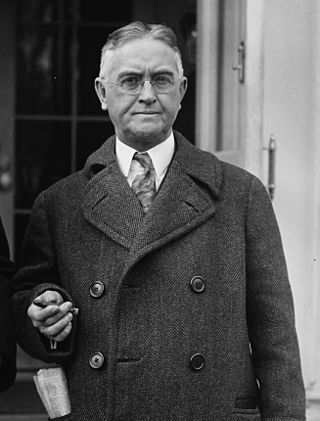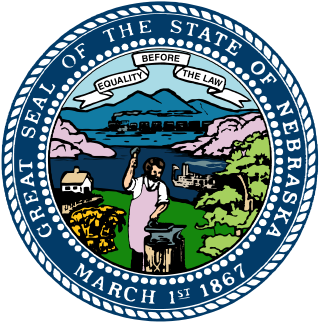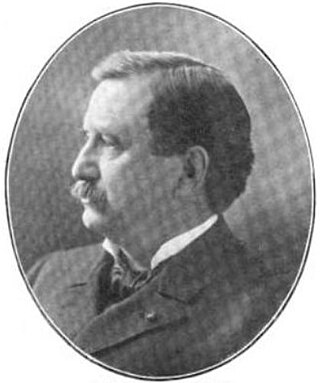
The 1934 Pennsylvania gubernatorial election occurred on November 6, 1934. Incumbent Republican governor Gifford Pinchot was not a candidate for re-election.

The 1914 Wisconsin gubernatorial election was held on November 3, 1914. Primary elections were held on September 1, 1914.

The 1924 Nebraska gubernatorial election was held on November 4, 1924, and featured former state Senator Adam McMullen, a Republican, defeating Democratic nominee, former state Representative John N. Norton, and Progressive nominee, Omaha City Commissioner Dan B. Butler.

The 1888 Connecticut gubernatorial election was held on November 6, 1888. Republican nominee Morgan Bulkeley defeated Democratic nominee Luzon B. Morris with 47.94% of the vote.

The 1890 Wisconsin gubernatorial election was held on November 4, 1890.

The 1894 Wisconsin gubernatorial election was held on November 6, 1894.

The 1888 Illinois gubernatorial election was held on November 6, 1888.

The 1902 Nebraska gubernatorial election was held on November 4, 1902. Republican nominee John H. Mickey defeated Democratic and Populist fusion nominee William Henry Thompson with 49.69% of the vote.

The 1900 Nebraska gubernatorial election was held on November 6, 1900.

The 1898 Nebraska gubernatorial election was held on November 8, 1898. Incumbent Populist Governor Silas A. Holcomb did not stand for re-election. Populist and Democratic fusion nominee William A. Poynter defeated Republican nominee Monroe Hayward with 50.19% of the vote.

The 1896 Nebraska gubernatorial election was held on November 3, 1896, and featured incumbent Governor Silas A. Holcomb, a Populist, defeating his major rival, Republican nominee John H. MacColl, to win a second two-year term in office.

The 1890 Nebraska gubernatorial election was held on November 4, 1890. Incumbent Republican Governor John Milton Thayer did not seek reelection.

The 1886 Nebraska gubernatorial election was held on November 2, 1886.

The 1870 Nebraska gubernatorial election was held on October 11, 1870. Two-term incumbent Governor of Nebraska David Butler, the Republican nominee, was seeking a third term as governor. He was opposed by Democratic nominee John H. Croxton, a lawyer from Nebraska City.

The 1924 Nebraska lieutenant gubernatorial election was held on November 4, 1924, and featured Republican nominee George A. Williams defeating Democratic nominee P. J. Mullin as well as Progressive nominee Granville Hummer and Prohibition nominee J. F. Webster. Incumbent Nebraska Lieutenant Governor Fred G. Johnson, a Republican, chose not to seek reelection to the office of lieutenant governor in order to challenge George W. Norris for the Republican nomination for US Senate from Nebraska.

The 1918 Nebraska lieutenant gubernatorial election was held on November 5, 1918, and featured Republican nominee Pelham A. Barrows defeating Democratic nominee William B. Banning as well as Prohibition Party nominee David B. Gilbert. Incumbent Nebraska Lieutenant Governor Edgar Howard decided not to seek reelection to the office of lieutenant governor in order to run for US Senate, but he was defeated in the Democratic primaries by John H. Morehead.

The 1886 Nebraska lieutenant gubernatorial election was held on November 2, 1886, and featured incumbent Nebraska Lieutenant Governor Hibbard H. Shedd, a Republican, defeating Democratic nominee Charles J. Bowlby as well as Prohibition Party nominee E. B. Graham and National Union Party nominee M. K. Lewis.

The 1888 Nebraska lieutenant gubernatorial election was held on November 6, 1888, and featured Republican nominee George de Rue Meiklejohn defeating Democratic nominee Frank Folda as well as Prohibition Party nominee John Dale and Union Labor nominee C. W. Potter.

The 1894 Nebraska lieutenant gubernatorial election was held on November 6, 1894, and featured Republican nominee Robert E. Moore defeating Populist and Democratic fusion nominee James N. Gaffin as well as Straight Democratic (anti-Populist) nominee Rodney E. Dunphy and Prohibition Party nominee Belle G. Bigelow.

The 1896 Nebraska lieutenant gubernatorial election was held on November 3, 1896, and featured Populist and Democratic fusion nominee James E. Harris defeating his major rival, Republican nominee Orlando Tefft. Other candidates who received two percent of the vote or less included Gold Democratic nominee Owen F. Biglin, Prohibition nominee Lucius O. Jones, Socialist Labor nominee Fred Herman, and National Silver nominee Oscar Kent. Incumbent Nebraska Lieutenant Governor Robert E. Moore did not seek reelection.

















